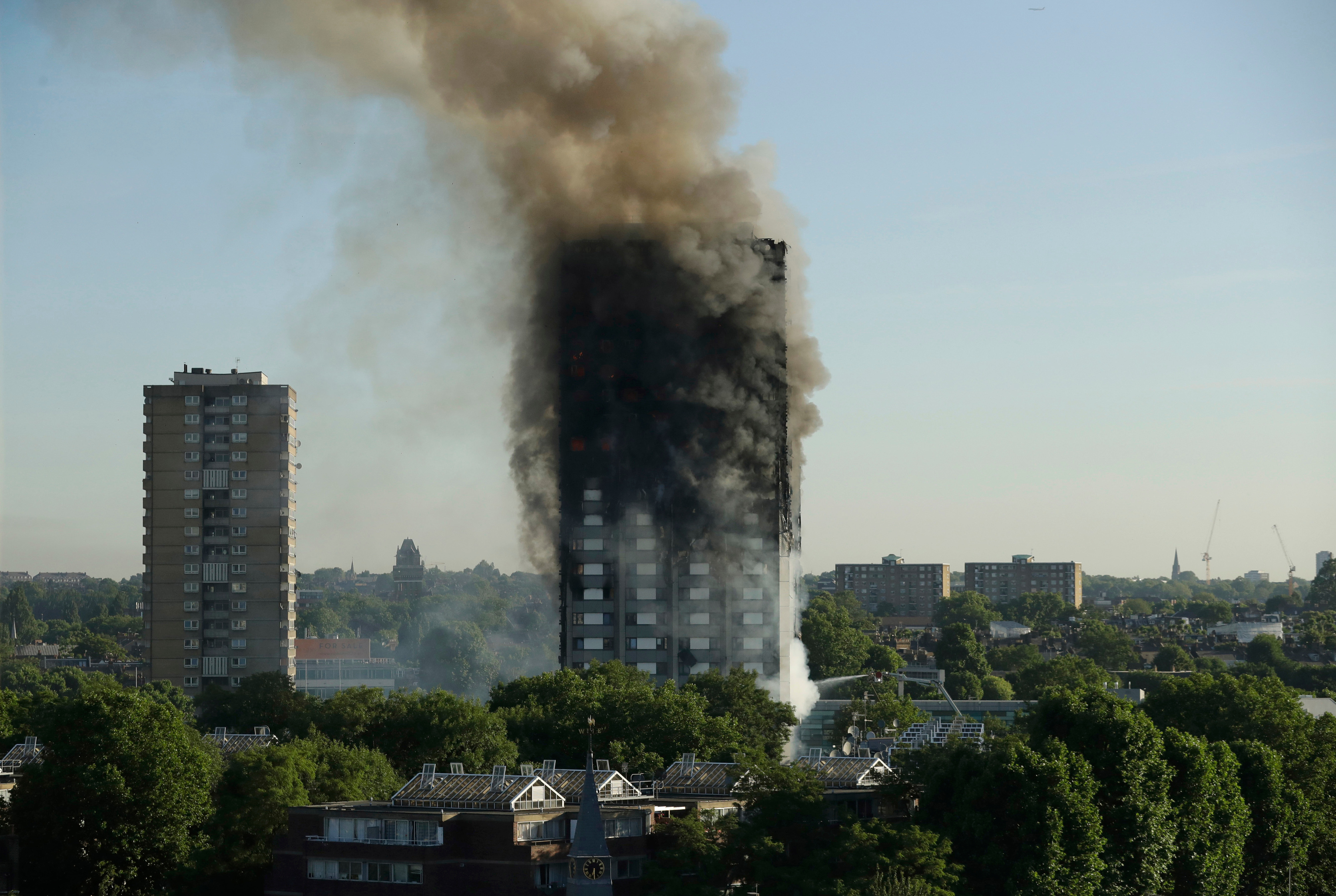Each and every one of the 72 deaths in the horrifying fire that destroyed the Grenfell Tower in London on June 14, 2017 were "avoidable." After more than seven years, the final investigation into the tragedy identifies up to 250 alleged individuals responsible for negligence: from Lord Jack Pickles, former Secretary of Communities and Local Government, to the company Arconic (manufacturer of highly flammable cladding), and including the London Fire Brigade, for their inadequate preparedness to handle the situation and "serious deficiencies in the chain of command."
Sir Martin Moore-Bick, head of the investigation that cost 237 million euros, has made public his conclusions that have reopened wounds among the over 500 survivors of the tragedy and the victims' families, who still await justice.
Scotland Yard has identified 58 individuals and 19 organizations for their alleged responsibility in the tragedy. The report partially exonerates former Prime Minister David Cameron and Theresa May, the then occupant of Downing Street at the time of the tragedy, who was also criticized for her delayed response.
The 1,700-page investigation concludes that the tragedy was the result of "decades of negligence" by the central government in failing to ban the use of flammable materials in cladding and the "systematic lack of honesty" of the companies involved in the renovation of the 23-story tower that burned like a pyre. The report is particularly critical of the local authorities in the Kensington and Chelsea district and the contractor managing the building (TMO).
The report came as a bombshell in the House of Commons, with a barrage of accusations against the Conservative governments for the lack of action before, during, and after the tragedy. "We have identified 4,630 buildings with similar cladding and 50% have already started remediation works," stated Deputy Prime Minister Angela Rayner. "We need to accelerate this task."
Meanwhile, the ghost of the Grenfell Tower looms over the forgotten corner of Notting Hill. The structure remains covered after seven years by scaffolding and a white sheet, topped with a green heart in memory of the victims (Forever in our hearts). Its demolition is still pending the ongoing police investigation.
"We have waited seven years to know the truth," stated Ed Daffarn, one of the 223 survivors of the fire, now leading the Grenfell Survivors organization. "To date, we have witnessed a carousel of blame. We have reasonable hope that the final investigation will serve to reveal the whole truth."
The official investigation accuses the cladding manufacturer of "deliberately concealing" the product risks and the Conservative governments of "ignoring, delaying, or disregarding" concerns expressed by residents and experts over the years.
The 24-story, 120-apartment tower burned in less than three hours from a short circuit in a fourth-floor refrigerator. The building's cladding - constructed in 1967 and renovated in 2012 - consisted of aluminum composite panels with a polyethylene core.
The high combustibility of the cladding, combined with gaps, contributed to the rapid spread of the fire and created a "chimney effect." Firefighters were unable to use the building's water supply and could not use the elevators to transport their equipment to the upper floors.
The building had only one staircase (legally allowed in the UK). Residents of the upper floors were also instructed to "stay put," further complicating the evacuation. No one died below the 11th floor, but the constant helicopter presence caused further confusion on the upper floors: many believed they would be rescued from the roof.
The investigation also questions the London Fire Brigade for numerous "deficiencies" in organization, preparedness, and chain of command, as well as for "lack of effective leadership" and "a complacent attitude."
In the most emotional part of his statement, lead investigator Martin Moore-Bick recalled how the fire was above all "a human tragedy" and emphasized how most of the 72 deaths were due to inhaling toxic gases before being reached by the fire.
Moore-Bick highlighted how the survivors were "abandoned" by local authorities and by "organizations that should have protected them in an emergency situation."
The investigator concluded with a series of recommendations - from establishing a new construction regulatory body to specific and mandatory fire safety plans for towers over ten stories - to prevent a new tragedy like that of the Grenfell Tower, which stands in London's history as the worst disaster in a residential building since World War II bombings.
